
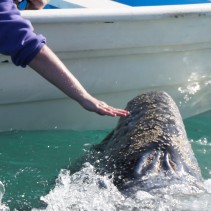
I wrote about how my debacle had, by Day 3, become a distant memory, when I experienced an unforgettable and magical encounter with whale sharks, the largest fish on the planet. If you missed it, you can begin at the beginning.
Or, pick up my story here, on Day 4:
A sliver of the waning moon was barely visible as I emerged from my cozy tent and greeted the sunny morning on Isla Espiritu Santo.
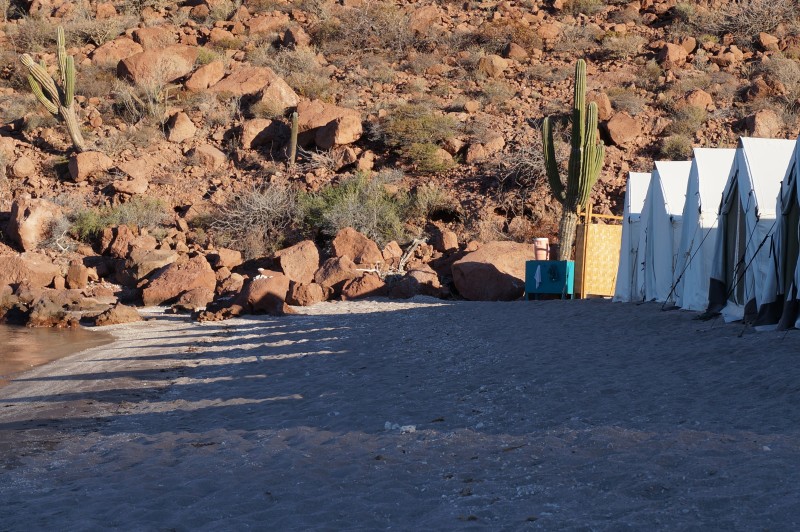
Good morning, Espiritu Santo! – where the rooflines of our tents cast jagged shadows along the sandy shoreline.
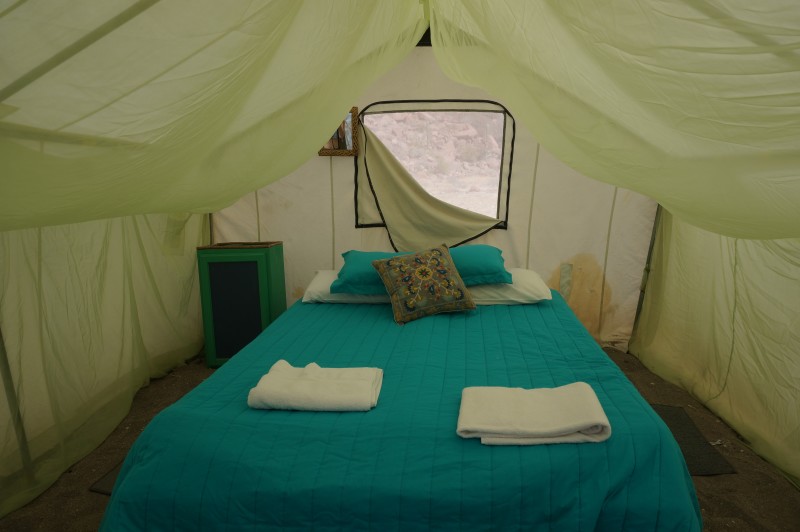
Our comfy bed in our cozy tent!
Fortified with a hearty breakfast of tortillas and scrambled eggs, we opted for a short hike. Our fabulous tour guide, Mauricio, explained that this is one of the most unspoiled ecosystems in Baja and is a biosphere and UNESCO World Heritage site. Archeologists have found evidence that humans were here 40,000 years ago.
We scrambled over sculpted sandstone rocks to the summit of Candlero Trail where we imagined what it would be like in the rainy season when roaring torrents of water rush through this narrow arroyo. But on this perfect morning it’s a dry waterfall – affording us a breathtaking vista of our beachfront camping site on the tranquil cove below.

Scenes from our morning hike on Candelera Trail
It was already pretty hot when we waded into the crystal-clear water and boarded our panga. Our captain, Jesús, sped us across the glassine Sea of Cortez to the pile of rocks knows as Los Islotes, home to a large colony of sea lions. Jumping into the chilly water, my wetsuit kept me warm but I found myself much too buoyant to dive beneath the surface as did Mauricio, who frolicked and swam circles around us with a curious little pup who zoomed in for a close-up on Scott’s underwater camera.
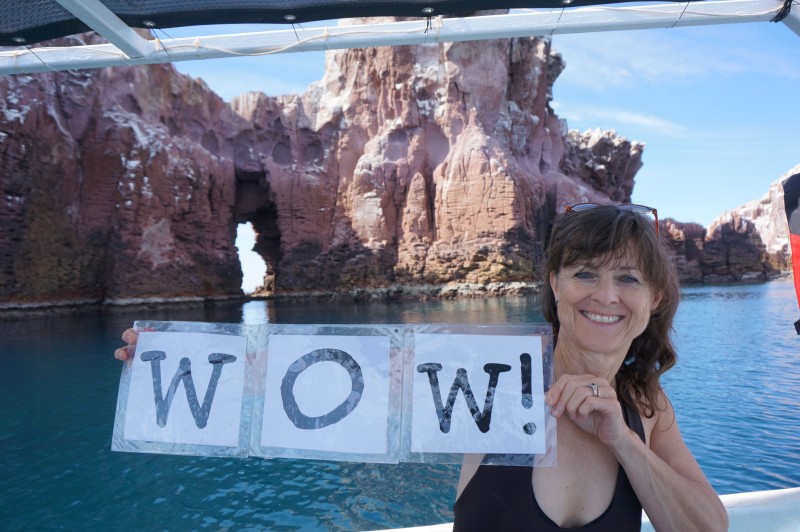
The island of Los Islotes, home to a thriving colony of sea lions
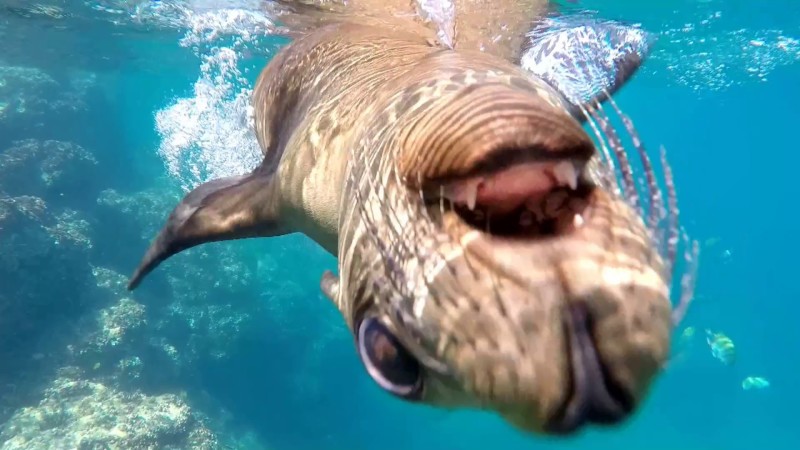
This curious little pup zoomed in for a close-up!
In addition to the sea lions, there was plenty more to see as hundreds of fish species, sea stars and urchins provided plenty of undersea eye candy.
Later that afternoon, after stopping back to enjoy lunch on our private island, I had a chance to try stand-up paddle boarding for the first time. I’m glad I tried it, but I have to say that I much preferred sitting down in a kayak to explore the coves of Espiritu Santo.
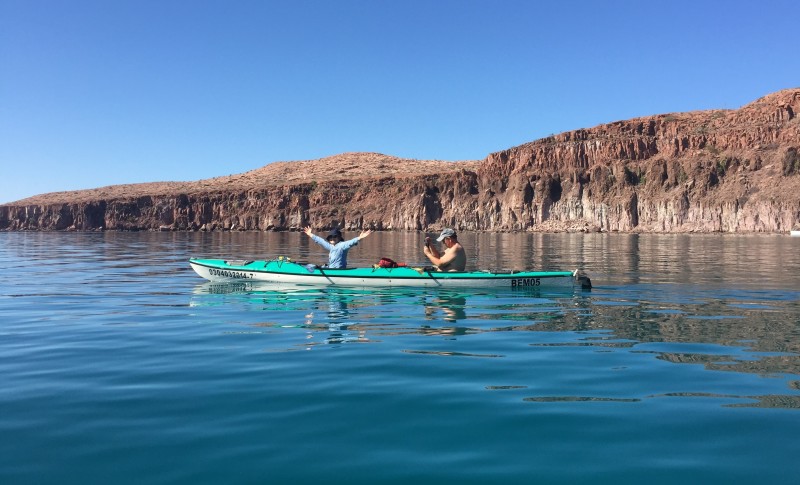
Kayaking was a breeze on these calm waters
Mauricio suggested we head out to try a new snorkel spot which revealed more treasures of this sea which Jacques Cousteau had famously described as, “the world’s aquarium.” Jesús showed us a few more “wows” – including cormorants which inflate bright red pouches in their necks when seeking a mate, and Blue-footed Boobies that I erroneously thought were only found in the Galapagos.
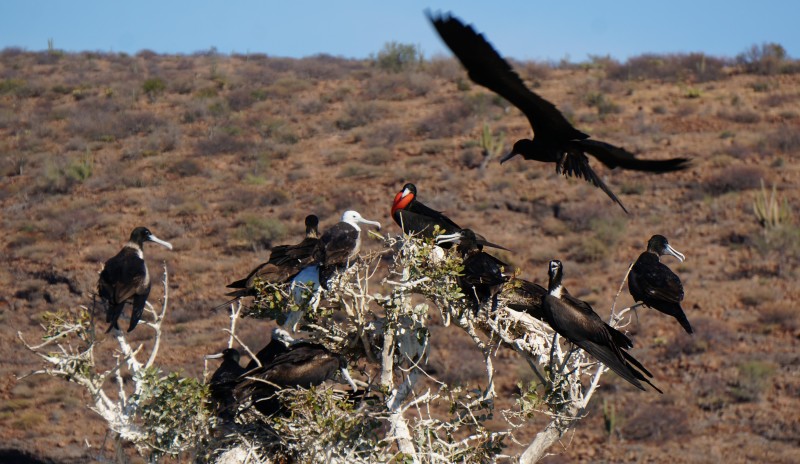
Male cormorant – looking for a mate by displaying his bright red throat
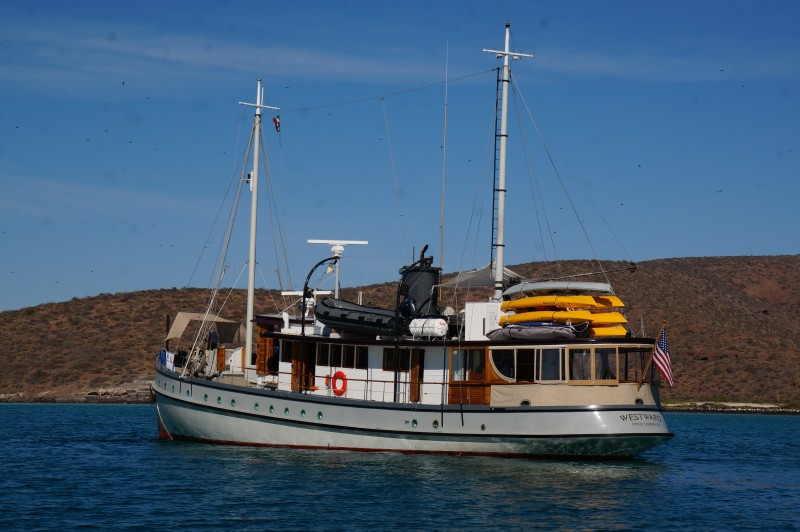
The m/v Westward, built as a steam-powered whaler in 1924 – now restored as a commercial yacht
Back on dry ground at Espiritu Santo, we shared photos, stories and sightings during dinner, and found ourselves yawning and ready for sleep.
It was only 9pm.
And not once had I bemoaned not having a wifi connection.
These two days of the journey would be completely new to me. I try, always, to schedule a site inspection in advance of every one of my WOW! trips to check things out first-hand. (I know, I know, but somebody’s gotta do it!) But it had not been possible for this one. Sometimes I have to trust that my suppliers have given me the absolute best recommendations.
And so this part of the journey was unique in that I would be “wowed” for the first time, right alongside my WOWees.
Expectations are funny things. One of the things I do quite well is anticipating and managing the expectations of my customers to that 1) they’re prepared and 2) they’ll not be disappointed. I had been assured over and over that, “whale encounters cannot be guaranteed,” “nature is unpredictable,” and “there’s about a sixty percent chance you’ll touch a baby whale, but . . .”
There always was a “but.”
But I’d seen the pictures and video of people in small boats having up-close-and-personal encounters with gray whales in the birthing lagoons of Magdalena Bay on the Pacific coast. So, despite all the cautions and caveats, I could barely contain my own expectations. All I wanted – at the very least – was to have an experience of touching a gray whale. That’s all.
These whales were called “devil-fish” by the whalers in the 1800s who used hand-held harpoons to kill their quarry. The gray whales were known to purposely surface underneath a whaleboat, smashing it to bits and drowning the crew. Back in those days, whaling was a lucrative business. According to Wikipedia: whale oil was vital in illuminating homes and businesses throughout the world in the 19th century and served as a dependable lubricant for the machines powering the Industrial Revolution. Baleen (the long keratin strips that hang from the top of whales’ mouths) was used by manufacturers in the United States and Europe to make consumer goods such as buggy whips, fishing poles, corset stays and dress hoops.
Eventually kerosene replaced whale oil as the preferred fuel, and the whaling industry more or less ceased. Nearly decimated in the late 1800s, the current Pacific gray whale population is estimated to be 22,000 – almost back to what it used to be.
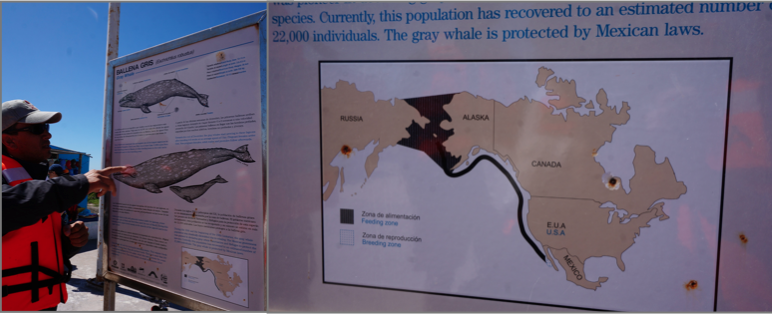
Mauricio educates us about the Pacific gray whale’s characteristics and the 6,000 mile migration from the Arctic to Baja
Our first 3-hour outing was an education in patience. Our Captain, Jose, was a local fisherman with superb boating skills. While there was some respectful jockeying for position among the handful of boats we encountered, I was impressed at the skill and courtesy of all the captains who made sure their guests had a pleasant experience.
We bobbed around in our 22-ft panga for a couple of hours, enthusiastically snapping hundreds of photos of spouting whales far in the distance. Eventually, though, we got closer . . .
Writers are not supposed to be at a loss for words. But I am.
It’s difficult to describe this visceral, emotional experience. It’s now 12 days later, and I still get goosebumps when I recall the experience. And so, instead of writing about it, I’ll share a 4-minute video which I created. I think this better captures the essence than anything I could write.
And I’ll say one more thing . . . It is, without question, one of my Top Ten Life Experiences. Which calls into question, “What are the other nine?” That’s a subject about which I’ll be pondering for a future blog. Until then, I leave you with this:
As always, thanks for reading, and thanks for commenting!
Copyright 2025 WOW! Travel. All Rights Reserved.
2 Comments
Theresa Beaver March 18, 2016 at 5:46pm
WOW!!! is right! I had visceral emotions just watching the amazing video, next year I’ve got to attend this trip!
Ellen Gruetzmacher March 18, 2016 at 6:40pm
Absolutely incredible! It appears that the whales have forgiven us greedy, ignorant humans for our past indiscretions – thank goodness they are a forgiving species! 🙂 Thanks for the vivid words and images, allowing us to enjoy the adventure vicariously… just made an addition to my already lengthy bucket list!